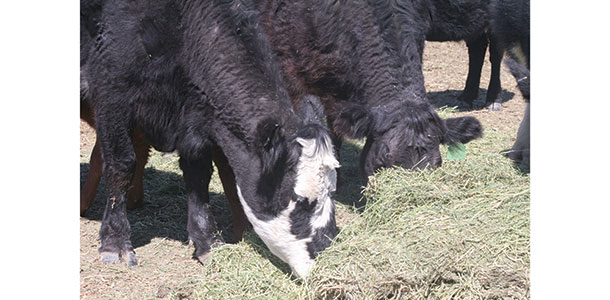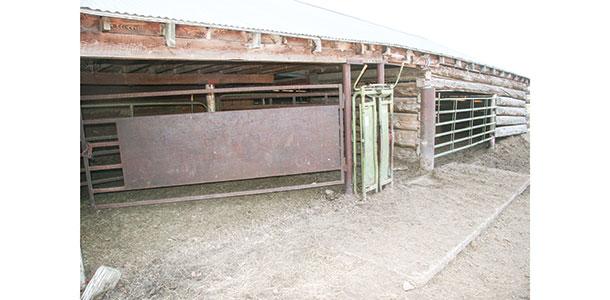This is the time in a cattleman’s work year requiring that “do whatever it takes” attitude.
With the greatest loss (57.4 percent) in the cattle industry occurring during the first 24 hours postpartum, and with that percentage growing to 75 percent for the first seven days, management at calving appears to be the most critical.
This fact has never been truer as a 500-pound weaned calf is worth more than $1,000 in today’s market. It seems obvious that any steps taken to improve calving are well worth the investment. This article will focus on best management practices (BMPs) to be taken at calving to try and ensure the best calving season possible.
1. Learn when to start helping
This is probably the most important and the most difficult decision to make when calving cows. Helping too soon can make calving almost impossible if the cervix is not dilated. However, when a cow has been trying to calve for some time without progress, there is usually a reason.
Actions of a cow trying to calve without success include nervous tail switching, bawling and walking nervously, laying down to calve and then getting up with no progress. The “no progress” usually includes no hooves showing at the vulva with the amniotic/water sac having ruptured.
The cervical dilation period will range from two to six hours where you see the nervous cow as described above. This is the first stage of labor.
If there is progression with the hooves and amniotic sac broken, the cow will progress to the second stage of labor, where the cow will start having abdominal straining to expel the calf. The calf will only live for eight to 10 hours after the heavy contractions begin.
To summarize, you need to examine the cow with your hand if:
- She has been in the first stages of labor for three to six hours and doesn’t start actively straining.
- She has been in the second stage of labor for one to two hours with little or no progress.
- If the water sac or the membranes have been evident for one to two hours with no progress.
Checking the cows every three hours will more than likely find any problem cows that may need help. This will require a close-up herd of cows close to calving that are easy to see and check regularly.
2. Discern the correct presentation of the fetus
Learning the correct presentation of the fetus can go a long way in determining problems during calving. When a fetus is presented correctly, there will be two hooves facing down with a nose or muzzle present at mid-cannon on the legs.
If there is no nose, the head is back and will need to be brought forward to correct the presentation. If only one leg is present with the head, the other leg needs to be brought forward so that labor can progress.
There is also a presentation where all you see is the head with no legs; again the legs need to be brought forward to correct the problem. The legs can be corrected if the person is able to reach into the uterus and grab the hoof and bring it forward, being careful not to perforate the uterus in the process.
Bringing the head forward may require the use of a head snare to help pull it around to make the presentation correct. Help may be needed to help push the calf back into the uterus to give as much extra room as possible to correct the presentation. This is very difficult to do – it’s a full workout.
If you see two hooves with the pads up, the presentation is backwards. This is not necessarily a problem; the calf just needs to come in a timely manner so as not to spend too much time in the birth canal without breathing. Help is often given in this instance to hurry the process.
The breech presentation is often the most difficult to diagnose. The cow, while nervous with tail switching, etc., never seems to get serious about having the calf.
This can go on for days with the final result of a decomposed calf inside the cow that you finally expel in pieces. (This is not a pleasant experience.) If you see the cow in the first stage of labor with no progress for one or two hours, you must check to see why. Finding the calf’s tail in the vagina is a sign to call for help.
3. Know when to pull the plug
A call to your favorite veterinarian may be one of the most cost-effective actions you can take. Not only can they give you valuable information, they can help you decide when extra help is needed.
Difficult presentations are often the cause of a C-section, especially if the cow has been pushing for several hours prior to being found. C-sections can also be used for calves that are just too big. When you see hooves the size of your fists, you may consider finding a vet.
The cost of a C-section should be somewhere around $150 to $250. This is much cheaper than losing the calf and is certainly cheaper than losing both the cow and the calf.
Calves that are too big cannot be changed at the time of calving; the change needed to take place nine months prior. Find a vet you like and allow them to help you be successful.
4. Feed for calving success
A study done in Iowa with 1,331 cows from 15 farms showed that 85 percent of the calves were born between 6:00 a.m. and 6:00 p.m. when fed once daily at dusk. It is much easier to take care of calving cows during the day than in the middle of the night.
Predators are much less active during the day, and radiant heat from the sun can be very helpful in assisting a young calf during the first hours of life. Feeding is an easy way to increase success at calving.
Feeding the new calf is also critical for success following a difficult assisted delivery. Ensure the intake of at least 2 quarts of colostrum, preferably within six hours of birth and absolutely prior to 24 hours after birth. This is easy to monitor if you assist the birth.
The cow should be milked to obtain the necessary colostrum. This should be administered with a tube feeder to ensure consumption. (Correct use of the tube feeder is critical.) It is always to your advantage to have colostrum saved and frozen from your cows.
If this is not possible, you should obtain clean colostrum from a neighboring ranch or dairy to give to your calves. If dairy colostrum is used, be sure to give 0.75 to 1 gallon of dairy colostrum per calf.
Commercial colostrum is also available for purchase. Be sure to find one that is effective to be able to ensure calf survival. For calves born with no assistance, be sure calves have sucked the cows as herd monitoring takes place. Proper and timely colostrum intake is critical to calf survivability.
5. Special facilities can make calving more enjoyable
Facilities to help a cow during calving make the task much easier. These facilities include but are not limited to the following items:
- A head catch that can be operated by one person. This usually requires moving gates on both sides of the head catch so room is available no matter which way the cow goes down.
- The head catch should be located in a covered shed so as to be out of the weather. Working in a blizzard is not pleasant, and lighting in a building is critical when working on a difficult delivery at night.
- Cleanliness is important for the calving shed. Straw or wood shavings can go a long way to make the environment more pleasant and clean when assisting births.
- Calving aids such as calf pullers, OB chains, lube, examination gloves, cleaning solutions and an adequate navel dip are all helpful in assisting the births. Be sure to follow label directions for these aids to ensure their correct use and your increased success.
- A place to put the new cow-calf pair can be very useful during the calving season. If you have several cows calving per day, you may want to have more than one extra pen at your disposal. While pairs are not “jugged” for very long, a 24-hour stay can be a lifesaver in difficult weather.
Cow-calf pairs should not be released until the calf has sucked effectively on its own. A warm room can also be helpful if there is a chance of freezing calves.
Facilities are an investment for your operation. Good facilities help make the calving experience more livable. Remember, the cost of loss is great, and facilities can help you be able to really do the job that needs to be done.
Management during calving is time-consuming but usually worth it. You may want to hire a helper during this time to check cows at night or at a time that fits your schedule. In most harvest situations, producers have extra help to make the harvest endurable.
Calving time can be the end of the world when things go sour. If an operation appears to be giving undue assistance to calving cows, perhaps a change in management is in order. Using calving-ease bulls may be an option that needs to be addressed in this situation.
Have a great harvest and happy calving – the most important time of the year. ![]()
PHOTOS
TOP PHOTO: Create a place to put the new cow-calf pair so that if you’re having several cows calving per day, you have space for them to connect in the first 24 hours.
MIDDLE PHOTO: A study showed that feeding late in the day to dusk will typically lead to calving during daytime hours.
BOTTOM PHOTO: A head catch located in a covered shed to shield from the elements is a facility feature that can make calving much easier in winter. Photos by Paul Marchant











